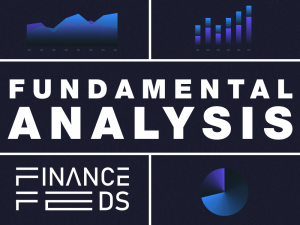FX client acquisition the intelligent way: Aussie bank goes scientific
Behavioral science is a very important key when retaining clients. Australia’s Commonwealth Bank has now embraced it, so should FX brokers

Attracting and retaining clients is now one of the biggest challenges for brokers as the FX industry matures and as CPA (Cost Per Acquisition) which is a major factor within an online advertising model grow highers, averaging $1000 per funded client in western countries.
To tackle the issue, some of the smaller retail brokers to whom cost of acquisition and retention is extremely important, have been ever more active in developing their differentiation angle via various means, ranging from promoting the social trading experience to offering deposit bonuses and cash rebates, as well as loyalty programs and interactive marketing campaigns, while automating data intelligence for the sales teams.
On that note, trading platforms such as MetaTrader 4 may pose an issue given that the ubiquitous trading platform acts both as a key facet with which to onboard clients and as a retention problem, becoming one of the main criteria when choosing a broker to open an account with, which also means those brokers risk being easily substituted following a minor incident or an aggressive marketing campaign by a competitor.
This may well appear as though it is a complex lesson in mathematics; a matter in which accountants must balance the cost of leasing trading infrastructure from a third party platform supplier against the cost of buying media and generating leads, then subsequently factoring in the cost of sales staff to call the leads and then add up the profit post-conversion.
The reality is that in today’s retail FX industry, where the end users have become ever more sophisticated and can absolutely tell if a broker is surviving from their deposited capital instead of connecting to a live market, which has exponentially improved the standards in terms of execution of trades within many medium sized retail brokerages, however it has left a conundrum, that being the completely outmoded marketing model which is not compatible with the commission business that brokerages offering genuine market execution now provide.
For one of Australia’s mainstream banks to actually embrace the sort of technologically advanced method of engaging new clients ahead of most brokers is quite a feat, however it should be regarded as a yardstick to follow.
Commonwealth Bank, one of the Southern Hemisphere’s most widely respected and well capitalized Tier 1 financial institutions, has moved toward exercising the discipline of behavioural economics for a new in-app tool that help customers save towards specific goals.
Citing research that suggests that one in four Australians do not enjoy life because of the way they manage their finances, the bank has added the Goal Tracker feature to its app, and the tool prompts customers to set a personalised savings goal and breaks the total amount into different stages to create smaller, more achievable milestones.
Nearly half of people using the Goal Tracker have also taken up the option to automatically move money to their savings once they get paid.
Kate Crous, General Manager of Digital Banking at Commonwealth Bank today stated “We know the main barriers to saving are related to a lack of self-control, not having a formal plan in place or people simply forgetting to put money in savings. We’ve created Goal Tracker to help customers create better financial habits. The tool combines the latest in digital banking innovation as well as behavioural science to help customers improve their financial wellbeing.”
For behavioral scientists interested in FX and other wider asset classes, there has been some data made available by specialists recently, but it is not yet part of the mainstream retail trading environment. Trading, particularly “technical” trading, is often based on time-series data, the type of data in which most of you already have extensive training. The data itself (i.e., price movement) is comprised of the behavioral products of millions of traders in various markets, set in a field of setting factors in the global economy.
The main goal of technical trading is to watch for price trends and profit from them. You can profit from rising prices by “going long”, which means to buy at a low price and sell at a higher price. However, you can also profit from falling prices by shorting the market, which involves borrowing stocks, selling them at a higher price, then buying them back at a lower price and taking the profit.
Moreover, trading comes with a variety of descriptive analytics, many of which are free, and are fairly simple to wrap your head around. Supporting analytics, or technical indicators, are used to help determine the probability that changes in price are indicative of a larger trend or if they are simply “noise” or random variation. Some indicators are designed to predict price movements before they happen.
For retail firms that expend so many resources on gaining new clients, surely these intelligent methods of engaging traders are very much worth emulating.









